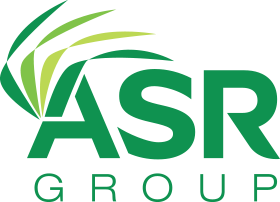USA
800 691 9120
UK
01225 704844
We use cookies on our website to analyze website usage and to help secure the website against misuse. Advertising and functional cookies are not used in our site or our web application products.
By clicking “Accept Essential Cookies Only”, you consent to us placing these cookies.
xAssets Development Labs have created a new way to calculate and store Software Asset Management licensing compliance using the same principles which are used in double entry accounting.
The system uses advanced matching algorithms to match consumptions against rights, and each are calculated according to license to rights expansion rules. Each consumption, each right, and each association all produce accounting style transactions which are posted into a book/ledger. Then our query engine utilises their calculations to gather SAM data and compliance data for reports and queries.
Each calculation phase is treated like an accounting period. Changes to the previous period are not permitted because it is closed, so any adjustments due are posted into this period as "catch-up" transactions at the start of the currently open period or calculation. If a consumption or right in a closed period needs to be modified, it is credited out of the old period and debited into the new period with a double entry, just like you would in accounts. This means that your old calculation still returns the same values, and you can track what's changed between the old and new systems.
So you can true-up your SAM at any point in time, apply corrections, and know that the record at that point in time or at any other point in time, can always be retrieved.
Software Asset Management engines typically rely on snapshot-based systems that record license compliance at a single point in time. This introduces blind spots, especially in modern IT environments where visibility of continous compliance is very important, not only to your vendors, but increasingly, compliance and disclosure of compliance is also creeping into agreements with enterprise customers.
A Temporal SAM engine performs time-aware software license compliance calculations and records each step as a transaction. Rather than analyzing assets and entitlements at a single moment, it records changes over time. This includes changes in asset lifecycles, license and contract expiry dates, IMAC changes, user allocations, installations, purchases, assignments, and license rules.
xAssets' new Temporal SAM engine will be released in Q4 2025.
Snapshot based SAM systems:
Temporal SAM engines retain the timeline of all events including installs, removals, assignments, purchases, and rule changes. The result is a continuous transactional audit trail. This results in:
The xAssets implementation models every license and asset transaction with temporal changes at a granularity suitable for corporate audit and reporting. Key innovations include:
xAssets also supports multiple calculation books, these work similarly to accounting books, where you can have different views of the same time period. An internal book can be maintained for internal use, allowing you to model license usage and check compliance at any point in time. When you need to share compliance data with a vendor, for example, during a true-up or audit— the internal book can be copied into a separate "true-up" or "published" book. This published view preserves all calculations and derivations, but presents the data as it stood at that specific point in time, giving vendors a fixed, point in time snapshot of your license position.
Multiple calculation books also allows modelling, so for advanced SAM modelling, you can leave the default rules, assignments and associations in place, but use new settings and new formulae to calculate your SAM position trying different methods.
Profoundly, this new technology has no impact on the internal workings of license matching algorithms. It only affects the way that the data is stored and uniquely enables the SAM position to be reported at any point in time.
The xAssets license matching algorithms use deep learning, multiple iterations and intelligent modelling to cover all the following scenarios:
There can be considerable complexity in the calculation of SAM compliance.
Some software titles can be licensed by either core-based licensing or per-server licenses where it might make sense to license the computers with many cores with a per-server license and the computers with fewer cores to per-core licensing.
Some software titles are obviously covered by suites, some software titles can only be used in certain platforms, some software can only be licensed in certain departments, locations, or cost centres, and sometimes software is purchased for specific devices or individuals.
Per-user licensing is becoming more common and there is a continual shift towards SAAS, IAAS, hybrid and other licensing models where cloud based resources are being adopted.
The xAssets calculate engine is deeply configurable, and uses an assignment then weighted affinity model to find the best licenses for each asset to produce the best overall outcome. Then it posts the assignments into the transaction ledger to record the SAM activity in a temporal way.
Organizations need to maintain continuous compliance, especially now this is required by vendors, customers, and many cybersecurity assessments demand it. Traditional snapshot SAM tools are not designed for this complexity. A Temporal SAM engine provides:
We cannot be sure we are only vendor who holds this innovation but it appears that most SAM tools today are built on snapshot-based models and lack any transactional basis outside of accumulating source records and treating them as intermediate transactions.
Temporal SAM engines is a definite technological advancement in software asset management. By shifting from snapshots to timelines, organizations gain more accuracy, flexibility, and defensibility in managing software compliance yet are still able to use snapshots for reporting to software vendors.
Free instances are free forever and can show demo data or your data.































